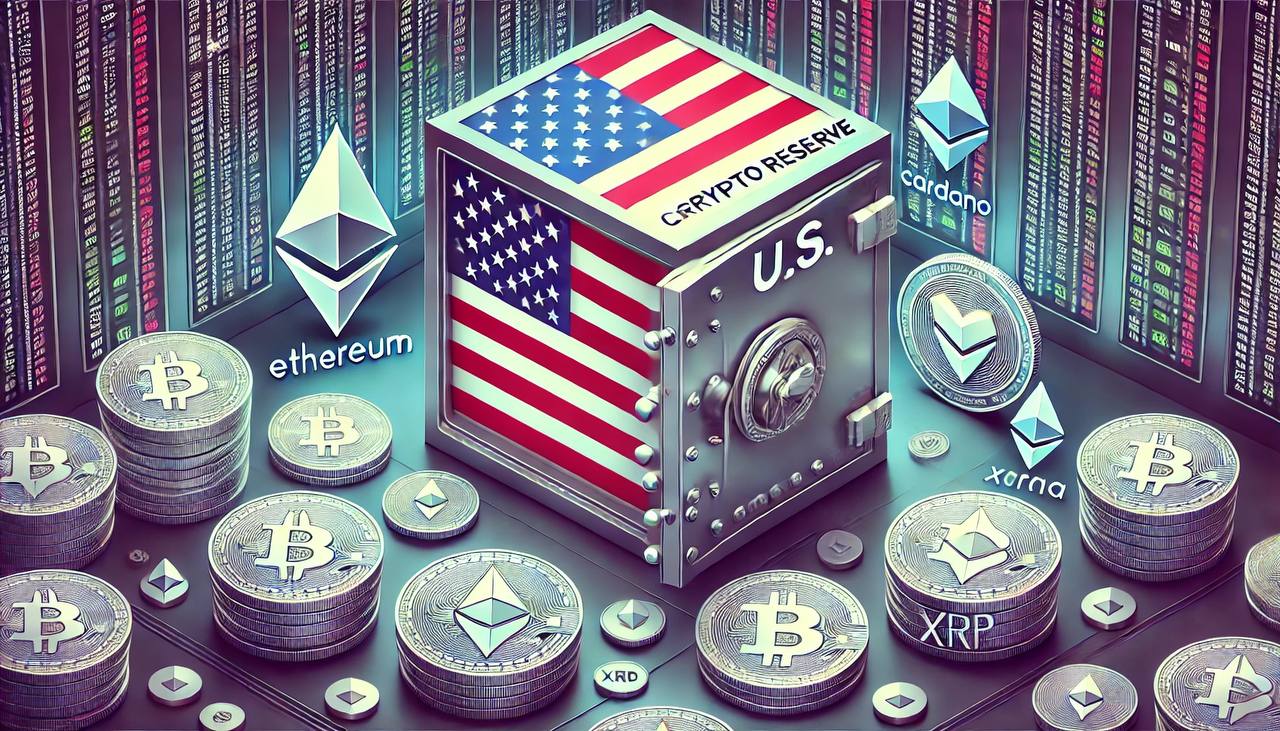Recently, a major proposal from former U.S. President Donald Trump has sparked widespread discussion in the crypto market, suggesting the creation of a crypto reserve for the U.S., which would include digital assets such as XRP, Solana (SOL), and Cardano (ADA). This move could be a significant turning point for the cryptocurrency market, marking a growing recognition of cryptocurrencies within traditional financial structures.
Trump has tasked the Presidential Working Group, created to develop the U.S. strategy for digital assets, to assess the feasibility of including these cryptocurrencies in the country’s crypto reserve. This statement highlights the importance of cryptocurrencies in the future financial landscape of the U.S. and reflects the government’s growing interest in regulating and integrating digital assets into the economy.
Why XRP, SOL, and ADA?
The choice of these cryptocurrencies for potential inclusion in the crypto reserve has its reasons. XRP, Solana, and Cardano all have high liquidity and institutional investor interest, making them significant candidates for national reserves.
1. XRP — the token used in the Ripple network, is known for its ability to accelerate international payments. This makes it attractive for use by financial institutions, which could increase its value as one of the crypto assets suitable for national reserves.
2. Solana (SOL)* — one of the fastest-growing blockchain platforms, known for its high performance and low fees. These qualities make Solana attractive for various decentralized applications and financial technologies, contributing to its growth amid growing investor interest.
3. Cardano (ADA) — a blockchain with a focus on security and sustainability, actively used for developing decentralized applications and smart contracts. Cardano has established itself as one of the most promising platforms for long-term growth.
If the U.S. does indeed create a crypto reserve involving these assets, it could lead to significant price increases and global financial market recognition.
Impact on the Crypto Market
This proposal by Trump could be an important step towards the legalization and integration of cryptocurrencies into the global financial system. Including these cryptocurrencies in the official reserve could open new horizons for investors and lead to the creation of new financial products and solutions based on digital assets.
Incorporating cryptocurrencies into national reserves could also strengthen trust in them among institutional investors, potentially leading to increased liquidity and reduced market volatility. On the other hand, it may also create additional challenges for governments, requiring new regulation and monitoring mechanisms for digital assets.
Tether Released Another $1 Billion USDT on Ethereum Blockchain
Another significant event on the crypto market was Tether’s announcement of releasing another $1 billion USDT (Tether USD) on the Ethereum blockchain. This step was taken to ensure liquidity and meet the growing demand for stable cryptocurrencies. Tether has traditionally been one of the most popular stablecoins, widely used in trading and investment strategies, as well as a store of value on cryptocurrency exchanges.
Tether actively supports market liquidity and continues issuing USDT in response to growing interest in stablecoins. The issuance of additional tokens also indicates Tether’s market stabilization and strengthening position. Despite some concerns about the transparency of its reserves, USDT continues to be one of the most liquid and sought-after stablecoins.
1 Billion XRP Unlocked from Ripple’s Escrow
Moreover, Ripple also unlocked 1 billion XRP from its escrow. This event is attracting special attention, as Ripple has long been one of the most discussed projects in the world of cryptocurrencies. Unlocking such large amounts of XRP could impact the token’s price and spark speculation among traders.
Ripple has long been actively working with financial institutions worldwide, offering solutions for international payments via its RippleNet network. However, with the recent legal battle with the SEC, the future of XRP remains uncertain. Unlocking additional billions of XRP may increase market supply, potentially leading to a short-term price decrease. Nevertheless, the long-term outlook for XRP remains promising due to its popularity in international payments.
These events — Trump’s proposal to create a U.S. crypto reserve involving XRP, SOL, and ADA, the issuance of $1 billion USDT, and the unlocking of $1 billion XRP — highlight significant changes in the cryptocurrency market. Including cryptocurrencies in national reserves could be an important step toward their integration into the official financial system and provide new opportunities for institutional investors. However, these events may also lead to increased volatility in the markets, requiring careful attention from market participants and regulators.
The future of cryptocurrencies like XRP, Solana, and Cardano could significantly change depending on further actions taken by governments and major financial players, and the market will continue to develop actively in this context.




